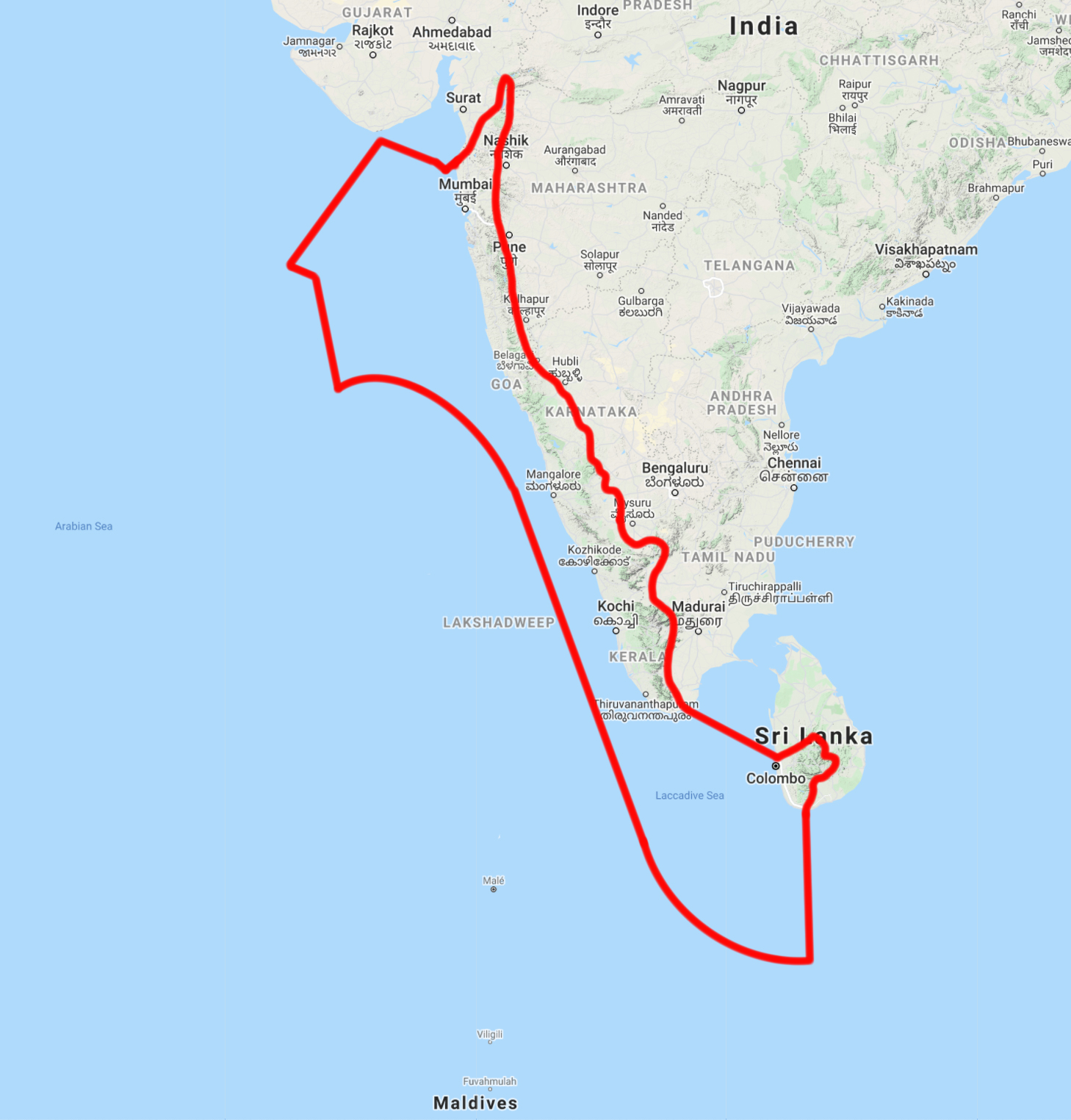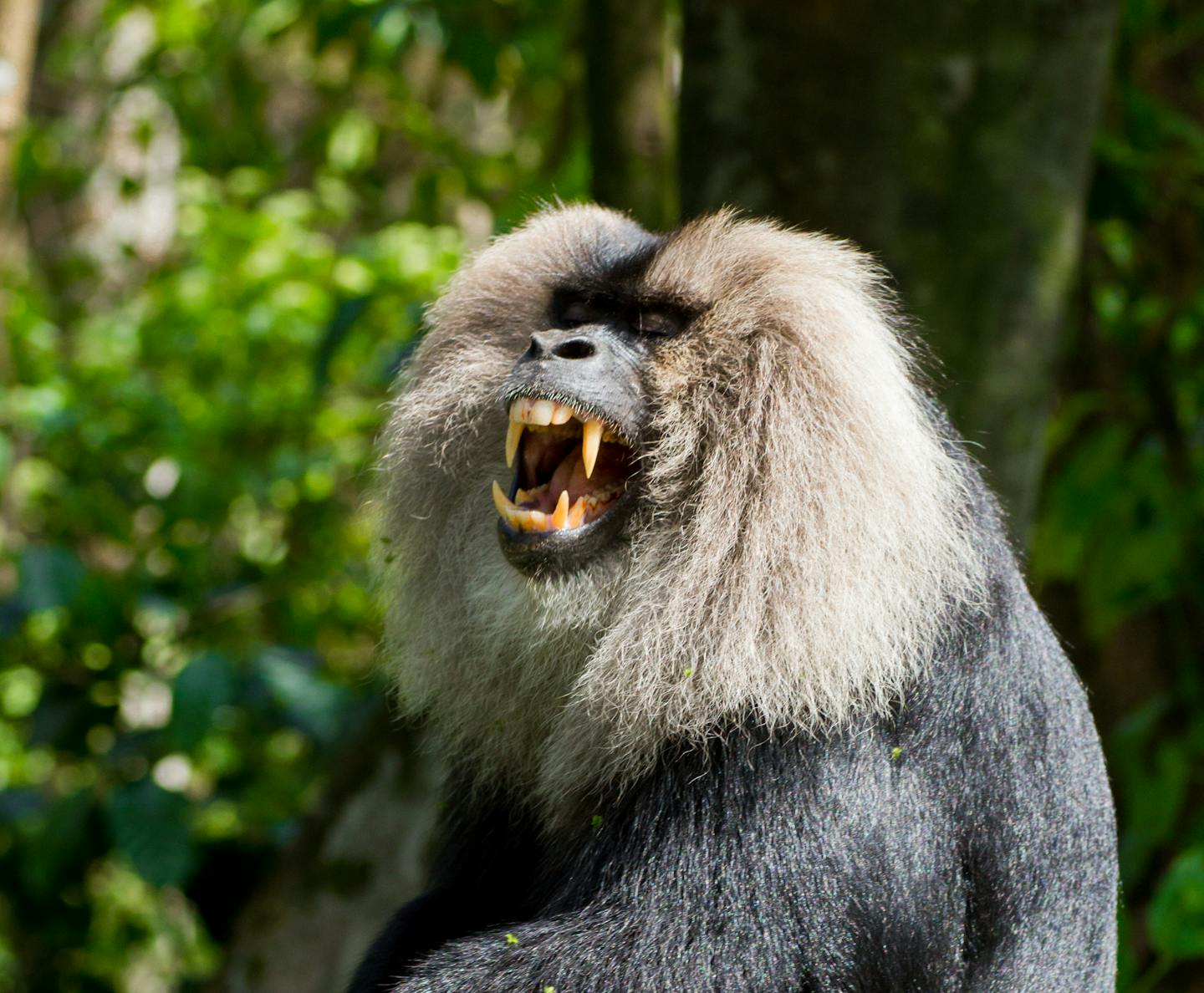Lion-tailed macaques: how bearded monkeys help the rainforest bloom
One Earth’s “Species of the Week” series highlights the flagship species of each of the 844 unique ecoregions contained within Earth’s bioregions.
It’s easy to see where the lion-tailed macaque gets its name with a long, thin, tufted tail and a thick, silver-white mane surrounding its face. Exclusively native to the Western Ghats in India, these charming primates play an integral role in their tropical ecosystem by dispersing seeds.

Lion-tailed macaques are the flagship species of the North Western Ghats Moist Deciduous Forests ecoregion, located in the Indian Tropical Coastal Forests (IM2) bioregion.
As one of the smallest macaque species, lion-tailed macaques weigh an average of 2–10 kg (4.4–22 lb) and have a body length of 42–61 cm (17–24 in). Their tails are 25 cm (9.8 in) long and paired with a black tuft at the end that is more pronounced in males than in females.
The hair of the lion-tailed macaque is entirely black, except for the famous light-colored mane that covers the head from the cheeks and extends well past the chin. This characteristic gives the macaque its nickname, the “beard ape.”
Though also known as “the wanderoo,” lion-tailed macaques don’t venture far from their familiar range. Solitary and shy, they stick with their hierarchical group of usually 10 to 20 members.
Dominant males of the group emit loud, human-like ‘whoops’ to alert outsiders entering their territory. Among the same group, lion-tailed macaques communicate with as many as 17 vocalizations. They also use body language, greeting one another by smacking their lips and grimacing to display dominance.

While spending most of their lives in the upper canopy of tropical moist evergreen forests, lion-tailed macaques selectively feed on many fruit trees. While they also consume leaves, buds, insects, and small vertebrates, the primary diet of fruits and seeds helps their ecosystem thrive. Dispersing seeds in their droppings, lion-tailed macaques sow and naturally fertilize new plants.
A unique survival trait of lion-tailed macaques is that they get part of their required water supply by licking dew from leaves. They also have pouches in their cheeks that act as food storage, much like chipmunks.
In the wild, lion-tailed macaques can live up to 20 years. Breeding begins at four years for females and six years for males. Gestation lasts six months, and the young nurse for one year before becoming an independent group member.

Lion-tailed macaques are listed endangered in conservation status, with less than 2,500 individuals left. The biggest threat is the destruction of their rainforest habitat. As much as 99% of the macaques’ original range is gone due to large-scale deforestation for timber, agriculture, and development.
Yet, conservationists are optimistic. After an international outcry, India’s government has worked to protect the species, and lion-tailed macaques have since been removed from ‘The World's 25 Most Endangered Primates’ list. This action demonstrates that international pressure and public campaigns human intervention and species awareness can play a pivotal role in species conservation.
Interested in learning more about the bioregions of Indomayala? Use One Earth's interactive Navigator to explore bioregions around the world.
Launch Bioregion Navigator


